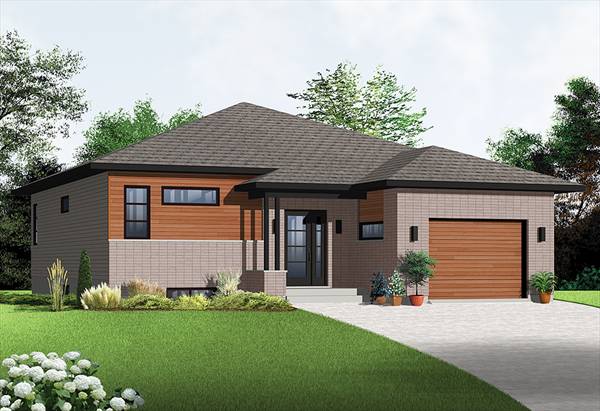When you hear the phrase “concrete house plans” you might imagine a home that looks like a military barracks building. The truth is that today’s concrete house plans are far away from that. Of course poured concrete and/or concrete blocks are used but they certainly don’t need to end up looking like a box. Concrete house plans are sometimes called ICF houses, short for Insulated Concrete Forms. Aside from their construction they are just like any other house plan. But what are the benefits of using concrete rather than wood or brick?
Strength- One of the advantages of concrete house plan construction is that it is strong and durable. It’s able to withstand weather extremes, hurricanes and even fires. Quite likely the toughest, longest-lasting construction method available.

Healthier Environment That’s Mold and Pest Free- Pests, mold, and moisture cannot damage or inhabit concrete in any way. With no termites, carpenter ants, rodents or other pests that might reside in a wood frame home it provides a cleaner environment that’s easy to maintain.
Concrete homes are also mold free because the walls contain no organic material that mold and mildews need to grow. It also reduces the infiltration of outside air that may bring in allergens. The polystyrene foam used in ICF construction is non-toxic and free of formaldehyde, asbestos, and fiberglass.
Energy Efficient with Lower Energy Bills- The process of constructing concrete is very energy efficient (water, aggregate, and cement mix). So by using concrete construction you are already helping the environment. Next, ICF concrete walls have high thermal efficiency. ICF walled homes require about 44 percent less energy to heat and 32 percent less to cool compared to typical wood framed houses. These energy savings come from the outstanding insulation values for ICF walls (their R-Value can get as high as R-40).

Comfort and Quiet- People who live in ICF homes praise the absence of cold drafts and unwanted noises. On top of the energy savings, ICF homes tend to have even temperatures and are far less drafty. A foam-and-concrete sandwich cuts air infiltration by as much as 75 percent. The high thermal mass of the concrete also protects the home’s interior from extreme outdoor temperatures. This makes them just as popular in the sunbelt states as in the northern climates.
Concrete walls are also effective with keeping out loud noises. The mass of the concrete reduces the sound penetrating through the wall by more than 80 percent, compared to stick built construction. Some sound still penetrates through the windows, but a concrete house plan is often two-thirds quieter than a wood frame home.
Concrete house plans may not be the most conventional or familiar construction method, but for the efficiency-seeking or environmentally conscious shopper a concrete house plan might be just the ticket. You can browse a wide selection of concrete house plans from The House Designers.
- Building a House in Florida – Styles, the Process & the Costs - July 26, 2019
- Add Appeal to Your Home with These Design Tips - March 19, 2015
- Preparing Your Home for Spring - March 15, 2015
